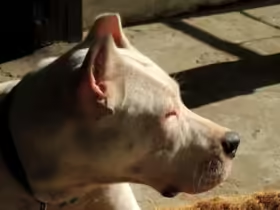Training your dog is one of the most rewarding aspects of dog ownership. Effective training improves your dog’s behavior, fortifies your bond, and guarantees a well-adjusted pet, regardless of whether you’re starting with simple commands or working toward more difficult tasks. With step-by-step instructions and advice for both novice and experienced handlers, this thorough guide will walk you through the fundamentals of dog training.
1. The Foundations of Dog Training
1.1. Understanding Your Dog’s Behavior
Before diving into training, it’s crucial to understand your dog’s behavior. Dogs communicate through body language and vocalizations, and recognizing these signals can help you tailor your training approach.
- Key Points:
- Body Language: Pay attention to tail wagging, ear position, and posture.
- Vocalizations: Barking, whining, and growling each have different meanings.
- Motivation: Identify what motivates your dog, whether it’s treats, toys, or praise.
1.2. Setting Up for Success
Effective training requires a positive environment and clear goals. Ensure you have the right tools and setting for successful training sessions.
- Key Points:
- Training Tools: Use high-quality treats, a leash, and clicker (optional).
- Training Area: Choose a quiet, distraction-free space.
- Consistency: Stick to a consistent training schedule and routine.
2. Teaching Basic Commands
2.1. Sit
The “Sit” command is one of the most fundamental commands and serves as a foundation for other commands.
- Step-by-Step Instructions:
- Get Your Dog’s Attention: Hold a treat close to your dog’s nose.
- Move the Treat Up: Slowly move the treat upwards, which will cause your dog’s head to follow.
- Encourage Sitting: As your dog’s head moves up, their bottom will naturally lower. Once seated, immediately give the treat and praise.
- Repeat: Practice regularly until your dog responds consistently.
2.2. Stay
The “Stay” command helps ensure your dog remains in place until released.
- Step-by-Step Instructions:
- Command Your Dog to Sit: Start with the “Sit” command.
- Introduce the Stay Command: Open your palm towards your dog and say “Stay” while stepping back a short distance.
- Reward and Return: Return to your dog, reward them, and gradually increase the distance and duration of the stay.
- Practice: Repeat and practice in different environments to generalize the command.
2.3. Come
The “Come” command is vital for recall and safety.
- Step-by-Step Instructions:
- Call Your Dog: Use a happy, enthusiastic tone to call your dog’s name followed by “Come.”
- Encourage Movement: Use a treat or toy to entice your dog towards you.
- Reward Immediately: As soon as your dog reaches you, give a treat and praise.
- Practice in Various Locations: Start indoors and gradually practice outdoors with increasing distractions.
2.4. Down
The “Down” command teaches your dog to lie down, which can help with calming and control.
- Step-by-Step Instructions:
- Command Your Dog to Sit: Begin with the “Sit” command.
- Guide to Down: Hold a treat in front of your dog’s nose and slowly move it towards the ground.
- Encourage Lying Down: As your dog’s head follows the treat, their body should lower to the ground. Reward and praise.
- Practice Consistently: Repeat the command and reward to reinforce the behavior.
3. Advanced Training Techniques
3.1. Teach Your Dog to Roll Over
Once your dog has mastered basic commands, teaching them to roll over can be a fun and impressive trick.
- Step-by-Step Instructions:
- Command Your Dog to Lie Down: Start with the “Down” position.
- Guide with a Treat: Move the treat from the dog’s nose towards their shoulder and then towards their back.
- Encourage Rolling: As your dog follows the treat, their body will roll over. Reward and praise them when they complete the roll.
- Repeat and Refine: Practice regularly, gradually reducing the use of treats as your dog learns the trick.
3.2. Teach Your Dog to Fetch
Teaching your dog to fetch is a great way to provide exercise and mental stimulation.
- Step-by-Step Instructions:
- Introduce the Toy: Show your dog the toy and encourage them to grab it.
- Throw the Toy: Gently throw the toy a short distance.
- Encourage Retrieval: Use a command like “Fetch” and encourage your dog to bring the toy back.
- Reward and Praise: When your dog brings the toy back, reward and praise them. Practice regularly to improve their fetching skills.
3.3. Teach Your Dog to Play Dead
The “Play Dead” trick is a fun and impressive command that can be taught with patience.
- Step-by-Step Instructions:
- Command Your Dog to Lie Down: Start with the “Down” position.
- Guide to Side: Gently roll your dog onto their side while giving the command “Play Dead.”
- Reward and Praise: Once your dog remains on their side, reward them with treats and praise.
- Practice and Refine: Continue practicing to solidify the trick, using the command consistently.
4. Troubleshooting Common Training Issues
4.1. Dealing with Distractions
Dogs can become easily distracted, which can hinder training progress.
- Tips for Managing Distractions:
- Start Small: Begin training in a low-distraction environment and gradually increase the level of distractions.
- Use High-Value Rewards: Use treats or toys that are especially motivating for your dog.
- Maintain Focus: Redirect your dog’s attention back to the task with calm, positive reinforcement.
4.2. Handling Training Setbacks
Training setbacks can occur, but they are part of the learning process.
- Tips for Overcoming Setbacks:
- Remain Patient: Keep a positive attitude and remain patient with your dog.
- Revisit Basics: Go back to basic commands and gradually reintroduce more complex tasks.
- Seek Professional Help: If setbacks persist, consider consulting a professional dog trainer for guidance.
4.3. Ensuring Consistency
Consistency is key to effective training.
- Tips for Consistent Training:
- Use the Same Commands: Always use the same verbal cues and hand signals.
- Stick to a Routine: Train regularly and maintain a consistent schedule.
- Involve the Whole Family: Ensure that all family members use the same commands and training methods.
5. Building a Strong Bond Through Training
5.1. Positive Reinforcement
Positive reinforcement is a crucial element in successful dog training.
- Key Points:
- Use Treats and Praise: Reward your dog immediately with treats, praise, or play for desired behaviors.
- Avoid Negative Reinforcement: Focus on encouraging good behavior rather than punishing mistakes.
5.2. Developing Trust and Respect
Training is not just about commands; it’s also about building trust and respect between you and your dog.
- Key Points:
- Be Patient and Understanding: Recognize your dog’s individual needs and learning pace.
- Create a Positive Experience: Ensure that training sessions are enjoyable and engaging for your dog.
5.3. Incorporating Play and Exercise
Incorporating play and exercise into training helps keep your dog motivated and healthy.
- Key Points:
- Include Playtime: Integrate games and interactive toys into training sessions.
- Provide Regular Exercise: Ensure your dog gets enough physical activity to support their overall well-being.
Conclusion
Training your dog from basic commands to advanced tricks is a rewarding journey that strengthens your bond and enhances your dog’s quality of life. By understanding your dog’s behavior, utilizing effective training techniques, and addressing common challenges, you can achieve success in your training efforts. Remember, patience, consistency, and positive reinforcement are key to a happy and well-trained dog. With dedication and the right approach, you and your canine companion can enjoy a fulfilling training experience together.











Leave a Reply